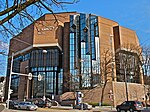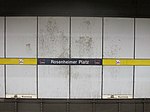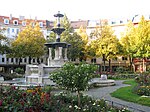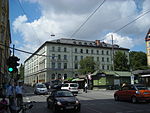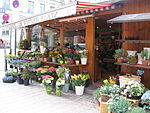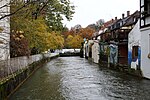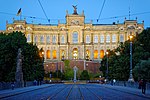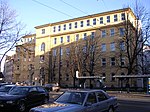Beer Hall Putsch

The Beer Hall Putsch, also known as the Munich Putsch, was a failed coup d'état by Nazi Party (Nationalsozialistische Deutsche Arbeiterpartei or NSDAP) leader Adolf Hitler, Generalquartiermeister Erich Ludendorff and other Kampfbund leaders in Munich, Bavaria, on 8–9 November 1923, during the Weimar Republic. Approximately two thousand Nazis marched on the Feldherrnhalle, in the city centre, but were confronted by a police cordon, which resulted in the deaths of 16 Nazi Party members and four police officers.Hitler escaped immediate arrest and was spirited off to safety in the countryside. After two days, he was arrested and charged with treason.The putsch brought Hitler to the attention of the German nation for the first time and generated front-page headlines in newspapers around the world. His arrest was followed by a 24-day trial, which was widely publicised and gave him a platform to express his nationalist sentiments to the nation. Hitler was found guilty of treason and sentenced to five years in Landsberg Prison, where he dictated Mein Kampf to fellow prisoners Emil Maurice and Rudolf Hess. On 20 December 1924, having served only nine months, Hitler was released. Once released, Hitler redirected his focus towards obtaining power through legal means rather than by revolution or force, and accordingly changed his tactics, further developing Nazi propaganda.
Excerpt from the Wikipedia article Beer Hall Putsch (License: CC BY-SA 3.0, Authors, Images).Beer Hall Putsch
Rosenheimer Straße, Munich Haidhausen - Süd (Au-Haidhausen)
Geographical coordinates (GPS) Address Nearby Places Show on map
Geographical coordinates (GPS)
| Latitude | Longitude |
|---|---|
| N 48.13 ° | E 11.592 ° |
Address
Rosenheimer Straße 15
81667 Munich, Haidhausen - Süd (Au-Haidhausen)
Bavaria, Germany
Open on Google Maps
